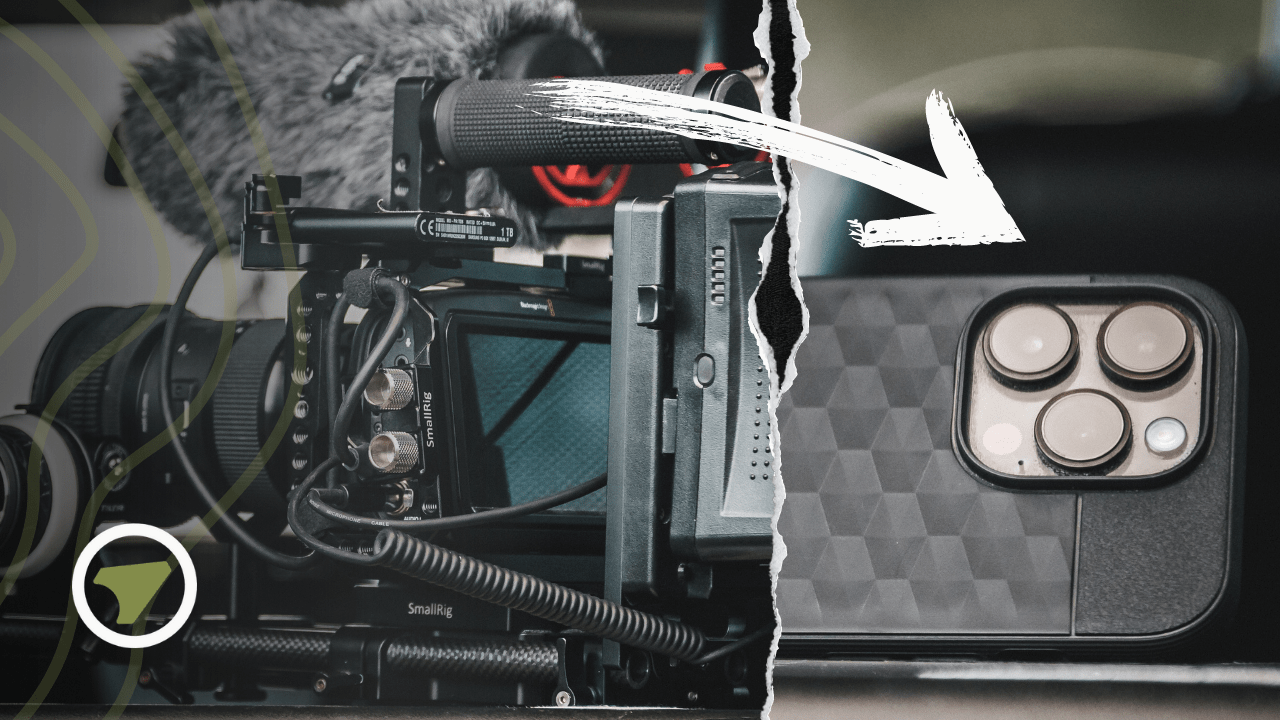The camera gear you use can be heavy, bulky, and cumbersome, but it doesn't always have to be.
While a cinema camera may work for one film, it may not be best suited for another.
In recent years, smartphones have become increasingly powerful tools for capturing high-quality video, raising this question for me:
Can you shoot adventure films on a smartphone?
To find out, I set myself some constraints and put my iPhone 14 Pro to the test while embarking on the Yorkshire Three Peaks, a 40-kilometer, 12-hour hike in the Yorkshire Dales.
Constraints and Accessories
To truly assess the capabilities of the iPhone 14 Pro as a filmmaking tool, I set some limitations for myself:
- The iPhone 14 Pro would be the only camera I brought with me.
- I would only shoot using the standard camera app to save time.
- I could bring some accessories but had to keep them minimal.
The accessories I chose included a small tripod for handheld and vlogging shots, a Rode VideoMic Me-L microphone with wind protection, and a battery bank with a charging cable to ensure I had enough battery life for the entire day.
The Filmmaking Experience
Initially, I struggled to get my brain into filmmaker mode using only my smartphone.
Limited controls and no interchangeable lenses made it feel quite different from professional gear.
However, having limited controls was a blessing in disguise for this specific project, as I had less time to film than I would have liked.
My smartphone let me quickly point and shoot without worrying about camera settings or changing lenses.
Due to time constraints, it was difficult to capture story elements and A-roll throughout the day, so I documented my journey using B-roll snippets and opted for narration to drive the film forward.
If I had more time, I could see the smartphone working to capture everything I needed, but for this particular adventure, it wasn't ideal.
The Results and Unique Advantages
One significant advantage of using my smartphone was the built-in GPS for each shot.
This feature made it easy to track my progress during the challenge, allowing me to create a tracker overlay in the final edit, which added a unique storytelling element.
However, I don't see this being overly useful in many situations, but it is a nice extra tool to have, just in case.
Smartphone image quality has come a long way, but it's still not on par with mirrorless or cinema cameras.
The lack of depth of field put everything in focus, sometimes resulting in too much detail in the image.
The iPhone also tended to over-sharpen the video, which I had to soften in post-production.
In future projects, I would consider using an app that gives more control over settings and colour profiles to avoid these issues.
So What is my Verdict?
Would I swap my cinema or mirrorless camera and shoot on an iPhone full-time?
No, but that's not to say that you couldn't.
Shooting an adventure film with a smartphone has its pros and cons.
While it's a convenient and fast way to capture footage, it falls short in terms of image quality and control compared to professional gear.
For me, I like to have more control over the image I'm shooting, and that's where professional gear comes into play.
However, I've used my iPhone as a B-camera on many occasions, quickly capturing shots when time was of the essence.
The image quality from the iPhone is fantastic, making it a great point-and-shoot option.
Smartphones like the iPhone have a valuable place in adventure filmmaking. They're quick, convenient, and offer remarkable image quality for those impromptu moments.
So don't discount the power of your smartphone when it comes to capturing your next adventure.
In fact, embracing the convenience of smartphone filmmaking can open up new creative opportunities and help you tell stories in ways that might not have been possible with traditional gear.
Know When to Use Each Tool
As a filmmaker, it's essential to recognize the strengths and weaknesses of each tool in your arsenal.
Professional gear provides more control and better image quality, making it ideal for projects where you have ample time and resources.
However, smartphones like the iPhone are valuable in adventure filmmaking when time is limited, or you need to capture footage quickly and conveniently.
Ultimately, the choice between a smartphone and professional gear depends on your priorities and the specific requirements of your project
If you need maximum control over the image and the best possible quality, then professional gear may be the way to go.
However, if you're willing to sacrifice some control and image quality for the sake of convenience, then a smartphone could be a viable option.
Future of Smartphone Filmmaking
With each new smartphone release, the gap between mobile devices and professional cameras narrows.
As technology advances, we can expect smartphones to become even more capable filmmaking tools.
I believe filmmakers should continue to experiment with smartphone filmmaking and leverage the unique advantages it provides.
By doing so, we can continue to push the boundaries of storytelling and discover new ways to capture our adventures.
Post by:
Izak Jackson





